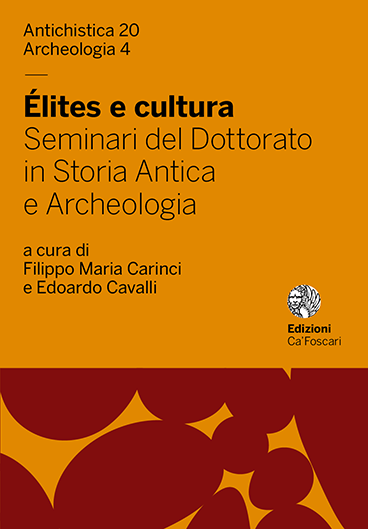Collana | Antichistica
Miscellanea | Élites e cultura
Capitolo | Necropoli o santuari?
Necropoli o santuari?
Rituali, credenze e pratiche religiose nel Mondo delle Steppe tra la fine dell’Età del Bronzo e l’Età del Ferro
Abstract
Beliefs and religious practices of the steppes people between the Bronze and the Iron Age represent one of the most interesting aspects of these cultures, which spread over a huge and highly varied territory. They are characterised by a series of local expressions, in which Iranian and Zoroastrian influences do not affect the originality of the sanctuaries and of the relevant religious practices. These are sometimes difficult to interpret, as for example the Kirighsuur and Deer Stones contexts, or rock art sites: these introduce very complex and highly debated issues, which are difficult to be fully understood, as for instance the question of shamanism. The most interesting phenomenon of the Iron Age (Scythian period) consists of massive burial mounds, that seem to acquire the role of real sanctuaries, which are strongly related to the landscape and to the natural elements, thus becoming the focus for the social and religious community. This hypothesis is proposed by some scholars, who argue that it may be supported by Herodotus’ description of the sanctuary of Ares.
Presentato: 27 Febbraio 2016 | Accettato: 27 Aprile 2016 | Pubblicato 06 Luglio 2019 | Lingua: it
Keywords Scythians • Kurgan • Sanctuary • Funerary rituals • Necropolis • Eurasian steppes • Religious beliefs
Copyright © 2019 Lorenzo Crescioli. This is an open-access work distributed under the terms of the Creative Commons Attribution License (CC BY). The use, distribution or reproduction is permitted, provided that the original author(s) and the copyright owner(s) are credited and that the original publication is cited, in accordance with accepted academic practice. The license allows for commercial use. No use, distribution or reproduction is permitted which does not comply with these terms.
Permalink http://doi.org/10.30687/978-88-6969-328-1/007




